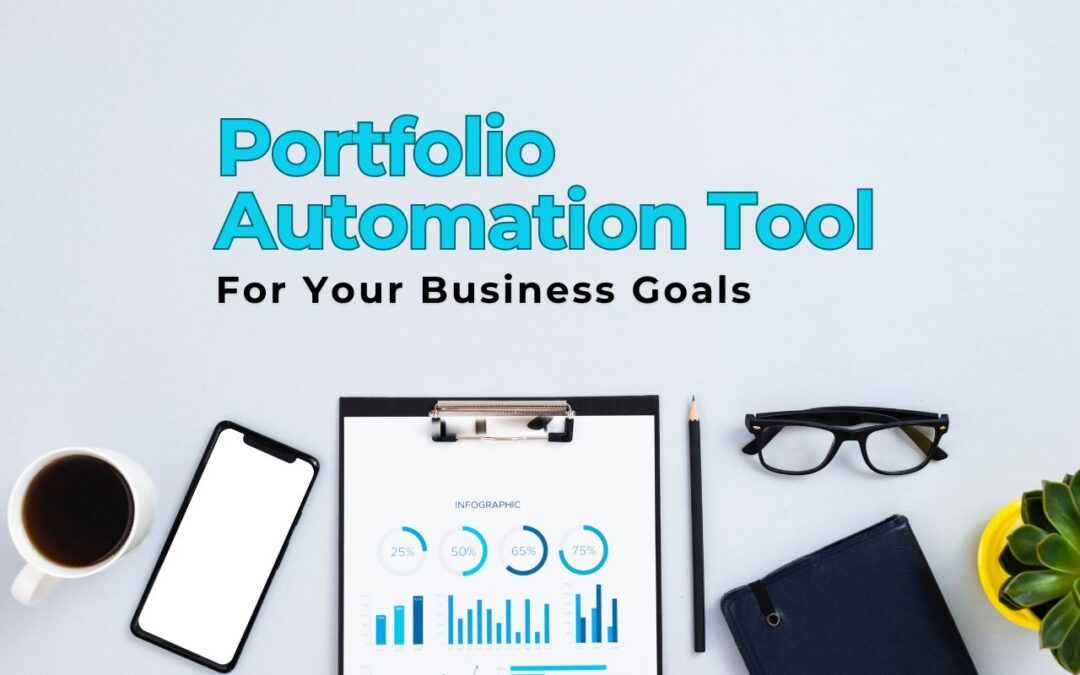In today’s competitive business environment, where digital transformation and data-driven strategies dominate, managing complex portfolios efficiently is not a luxury—it’s a necessity. Whether you’re handling multiple projects, investment assets, or digital initiatives, the right portfolio automation tool can be a game-changer. But how do you sift through the crowded marketplace of tools and platforms to find the one that aligns perfectly with your business goals?
This comprehensive guide will help you understand what a portfolio automation tool is, why your business needs one, and most importantly, how to choose the right one based on your unique requirements. We’ll cover essential features, evaluation criteria, common pitfalls, real-world use cases, and a checklist to guide your decision-making process.
What Is a Portfolio Automation Tool?
A portfolio automation tool is a software platform designed to help businesses streamline the management of multiple projects, investments, or digital assets. It automates repetitive tasks, tracks performance in real time, and ensures strategic alignment across all levels of the organization.
Unlike traditional project management tools that handle one project at a time, portfolio automation tools provide a bird’s eye view of all initiatives. They enable business leaders to prioritize work, allocate resources efficiently, and monitor performance against strategic goals.
The Rising Importance of Automation in Portfolio Management
As businesses expand, so do the complexities of managing various projects, departments, and investments. Manual tracking through spreadsheets and emails is not only time-consuming but also prone to errors. Portfolio automation tools solve this problem by offering:
- Centralized data management
- Automated reporting and alerts
- Scenario analysis and forecasting
- Strategic alignment of portfolios with business goals
According to a recent Gartner report, organizations that effectively use portfolio management tools see a 30% increase in decision-making speed and a 25% reduction in project costs.
Why Your Business Needs a Portfolio Automation Tool
Here are some key benefits that make investing in a portfolio automation tool a smart decision:
1. Improved Efficiency
Automation reduces the need for manual updates and calculations, saving countless hours of work.
2. Better Decision Making
With real-time insights, leaders can make data-driven decisions faster and with greater confidence.
3. Risk Mitigation
Early warning systems alert managers to bottlenecks, budget overruns, or off-track projects.
4. Enhanced Collaboration
Many tools come with built-in communication and task management features to improve team alignment.
5. Alignment with Strategic Goals
Portfolio views help organizations prioritize projects that support long-term objectives.
Key Features to Look for in a Portfolio Automation Tool
To ensure that the tool meets your specific needs, pay attention to the following features:
1. Customizable Dashboards
Dashboards should be tailored to different roles within your organization—executives, project managers, and team members.
2. Automated Workflows
Look for tools that automate recurring tasks such as report generation, status updates, and resource allocation.
3. Real-Time Data Synchronization
Ensure the tool integrates with your existing tech stack (e.g., CRM, ERP, time-tracking software) for seamless data updates.
4. Resource Management Tools
It should help allocate resources based on skillsets, availability, and project needs.
5. AI and Predictive Analytics
Advanced tools use machine learning to provide forecasts and recommendations.
6. Scalability
Your business will grow, and your tool should grow with it. Check for scalability in user licenses, data handling, and integrations.
7. Security and Compliance
Ensure the tool complies with data protection regulations such as GDPR, HIPAA, or SOC 2.
Step-by-Step Process to Choosing the Right Tool
Step 1: Define Your Business Goals
Start by identifying the primary objectives of adopting a portfolio automation tool. For instance:
- Do you want faster project delivery?
- Are you looking to optimize budget allocation?
- Is improving team collaboration a priority?
- Are you managing investment portfolios and need real-time performance tracking?
Step 2: Assess Your Portfolio Complexity
Understand the scope and scale of your current and future portfolio:
- Number of ongoing projects/investments
- Number of users or teams involved
- Geographic distribution of teams
- Integration requirements
Step 3: Evaluate Popular Tools in the Market
Here are some top-rated portfolio automation tools and their ideal use cases:
| Tool | Best For | Key Features |
| Monday.com | Project-driven businesses | Automation recipes, integrations, intuitive UI |
| Jira Align | Agile enterprises | Scales Agile across the enterprise, roadmap visibility |
| ClickUp | Startups & SMBs | Time tracking, goals alignment, custom automation |
| Asana | Marketing and creative teams | Timeline view, collaboration tools |
| Wrike | Mid-size businesses | Work intelligence, AI recommendations |
| Smartsheet | Data-driven teams | Spreadsheet interface, powerful integrations |
| Planview | Enterprise-level resource planning | Portfolio modeling, financial planning |
| Morningstar Direct | Financial services | Investment performance, scenario analysis |
Step 4: Conduct Demos and Free Trials
Before committing, take advantage of free trials. Involve actual users in testing the tool and gather feedback on:
- Usability
- Integration with existing systems
- Reporting capabilities
- Customer support responsiveness
Step 5: Evaluate Pricing vs. Value Delivered
Compare not just the upfront costs but also the long-term value. Ask questions like:
- Will this tool reduce the need for other software?
- How much time will it save my team monthly?
- Will it help us avoid costly project overruns?
Common Mistakes to Avoid
- Choosing a tool that’s too complex: More features don’t always mean better outcomes.
- Ignoring integration needs: A standalone tool won’t deliver the same ROI as one integrated into your ecosystem.
- Skipping user training: Even the best tool fails without proper adoption.
- Not aligning with company culture: Choose a tool that fits the way your teams work.
- Overlooking customer support: Fast, knowledgeable support can be a lifesaver.
Real-World Use Cases
Case Study 1: A SaaS Startup
A fast-growing SaaS company used ClickUp to manage product development, marketing, and customer support. The tool’s real-time dashboards and automation features helped the company reduce project delays by 40%.
Case Study 2: A Financial Advisory Firm
A mid-sized advisory firm chose Morningstar Direct to manage and automate client investment portfolios. With performance tracking and risk analytics, client satisfaction and portfolio returns both improved significantly.
Case Study 3: A Global Marketing Agency
The agency used Asana to coordinate campaigns across five continents. Automated workflows and timeline views improved collaboration and reduced email traffic by 60%.
Checklist for Choosing the Right Tool
Use this checklist when evaluating portfolio automation tools:
- Aligns with your business goals
- Scales with your company’s growth
- Offers real-time analytics and dashboards
- Integrates with existing tools and software
- Supports custom automated workflows
- Includes advanced reporting and forecasting tools
- Has strong data security and compliance measures
- Provides excellent customer support and training
- Easy to use and encourages team adoption
- Reasonable pricing relative to value delivered
The Future of Portfolio Automation
The next generation of portfolio automation tools will be even smarter. Expect deeper AI integration, voice-enabled interfaces, and even blockchain for secure data sharing. Companies that adopt early will gain a significant competitive advantage.
Final Thoughts
Choosing the right portfolio automation tool is more than a technical decision; it’s a strategic one. A well-implemented solution can unify your teams, streamline workflows, and align your portfolios with your overarching business goals. By taking the time to understand your needs and carefully evaluating your options, you position your company for sustained growth and smarter decision-making.
Remember, the best tool is not the one with the most features, but the one that works best for you.












